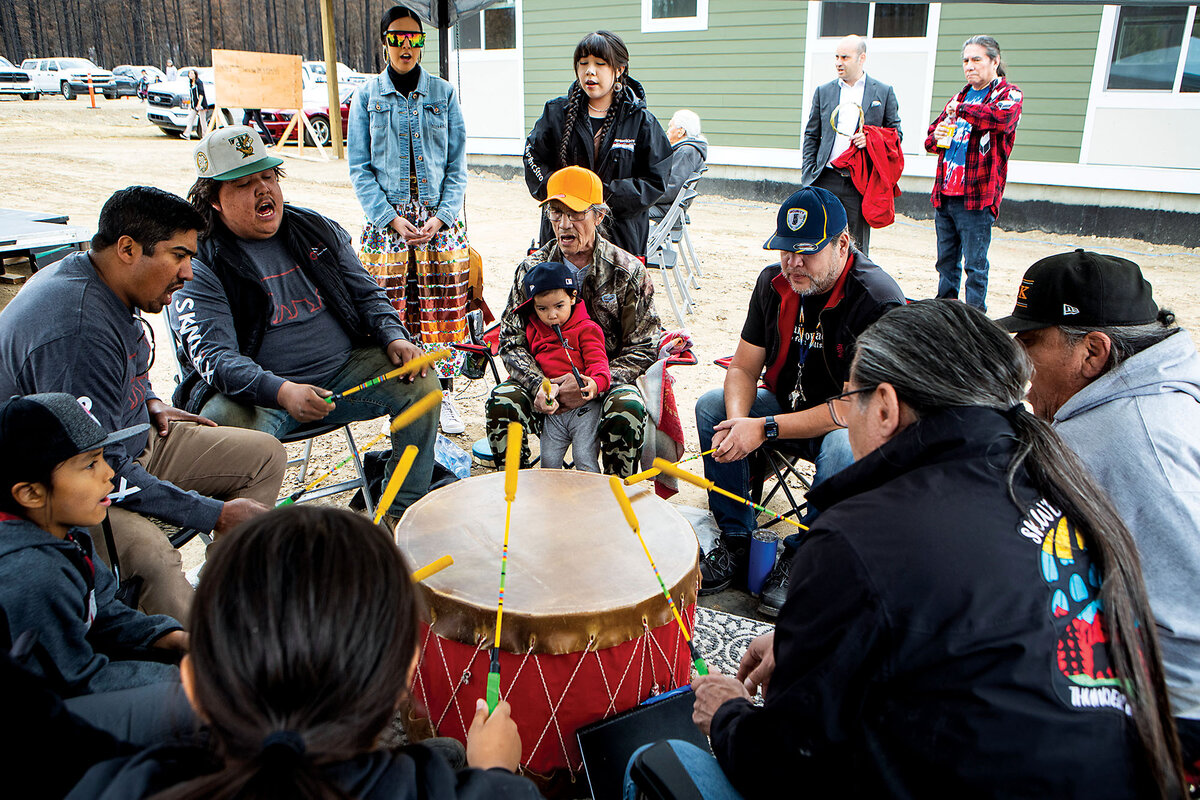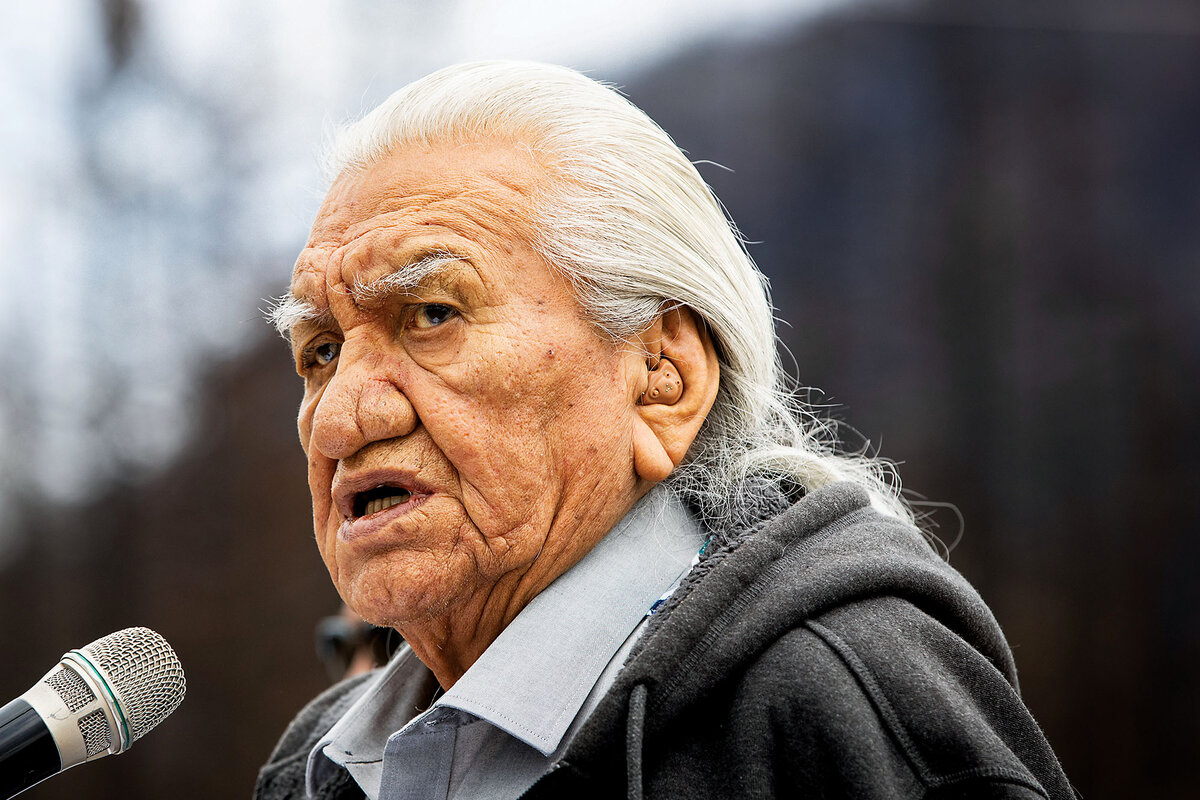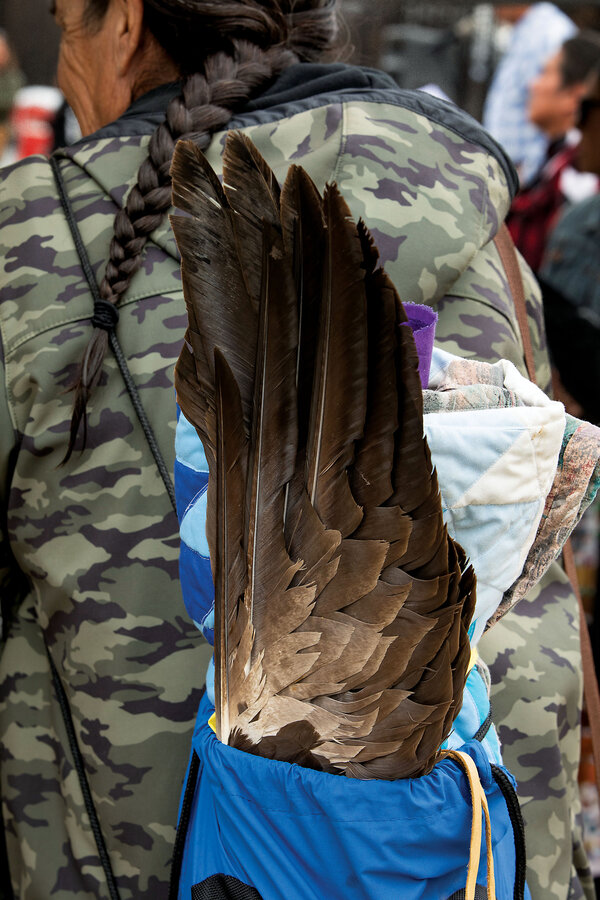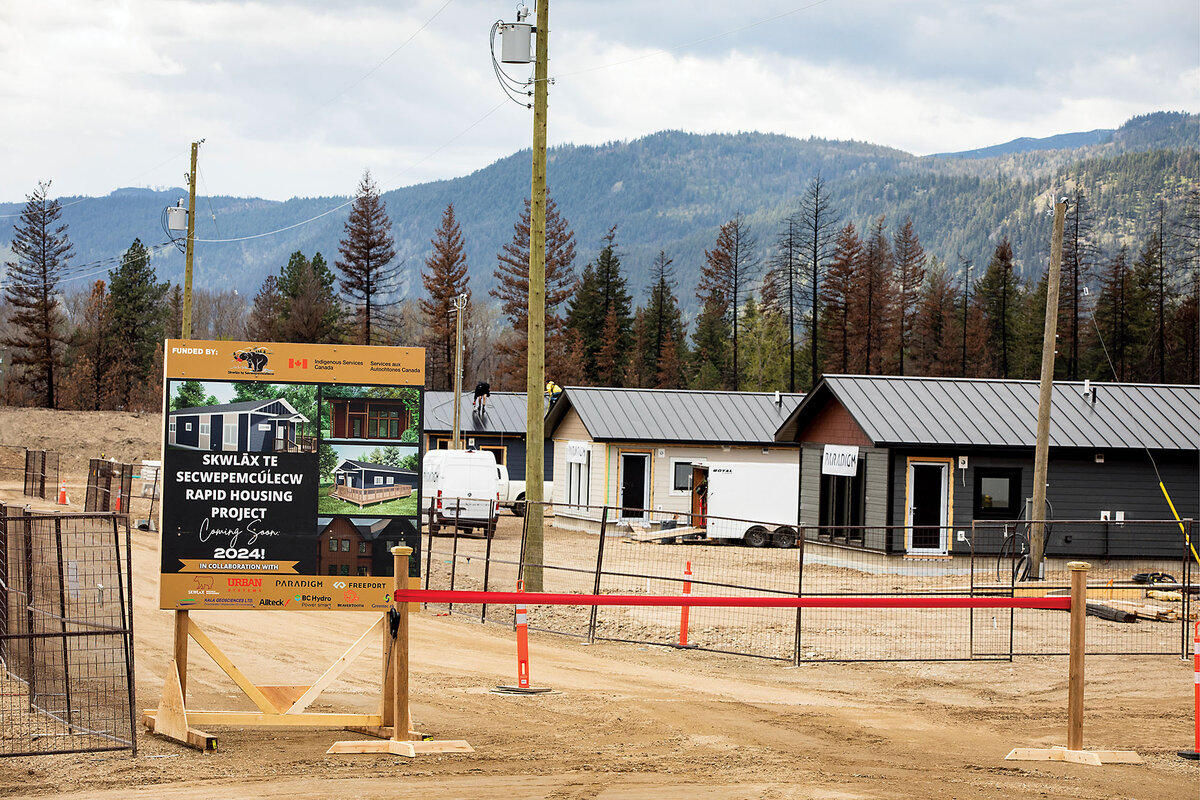A landscape lost, a community found: First Nation members rebuild after wildfire
Loading...
| Skwlāx te Secwepemcúl’ecw, Chase, British Columbia
Thirty-four homes were lost when a wildfire tore through Skwlāx te Secwepemcúl’ecw First Nation in British Columbia last August, including Kúkpi7 (Chief) James Tomma’s. He was displaced, like dozens in his community, to the city of Kamloops about 40 miles west and oversaw rebuilding efforts from there.
Indigenous communities, on the front lines of Canadian forests, have been disproportionately affected by the nation’s wildfires. Of nearly 300 evacuation orders last year in Canada’s worst fire season on record, a third were for Indigenous communities, according to the Canadian government.
Why We Wrote This
Indigenous communities in Canada have been disproportionately affected by wildfires. One community found its way home again after a destructive blaze.
In April, Kúkpi7 Tomma led a homecoming ceremony for residents returning after eight months away. The ribbon-cutting for the Dancing Fawn II subdivision, the first group of homes constructed, drew a wide range of public officials, including Canada’s Minister of Indigenous Services Patty Hajdu.
Drummers and singers performed as community members streamed into their new neighborhood. “I can’t say this is closure,” Kúkpi7 Tomma later explained, “but this is part of healing. My band members, we’re devastated. It’s a ‘welcome home’ ceremony bringing our people back on the land.”
Expand this story to see the full photo essay.
Ever since a wildfire tore through Skwlāx te Secwepemcúl’ecw First Nation in British Columbia last August, Kúkpi7 (Chief) James Tomma has sought to model resilience.
Thirty-four homes were lost in the blaze, including his own. He was displaced, like dozens in his community, to the city of Kamloops about 40 miles west and oversaw rebuilding efforts from there. Indigenous communities, on the front lines of Canadian forests, have been disproportionately affected by the nation’s wildfires. Of nearly 300 evacuation orders last year in Canada’s worst fire season on record, a third were for Indigenous communities, according to the Canadian government.
In April, Kúkpi7 Tomma led a homecoming ceremony for residents returning after eight months away. The ribbon-cutting for the Dancing Fawn II subdivision, the first group of homes constructed, drew a wide range of public officials, including Canada’s Minister of Indigenous Services Patty Hajdu.
Why We Wrote This
Indigenous communities in Canada have been disproportionately affected by wildfires. One community found its way home again after a destructive blaze.
Drummers and singers performed as community members streamed into their new neighborhood. “I can’t say this is closure,” Kúkpi7 Tomma later explained, “but this is part of healing. My band members, we’re devastated. It’s a ‘welcome home’ ceremony bringing our people back on the land, regardless of what it looks like or what it is.”
The new homes, where roofers were hammering away as the ceremony began, look onto acres of charred trees, a constant reminder of the devastation and a source of heartbreak for a landscape lost.
Elder Wilfred Tomma told those gathered he felt “naked” without the ceremonial objects he lost in the fire, including his sacred pipe and drum. But he also shared an elder’s perspective: Not a single life was lost in this fire. And the community has come together stronger, which Mr. Tomma said has fortified him.
“I’m very proud of our community,” he said. “They’re learning to be a community again. We forgot about that – how to be a community, one people.”












